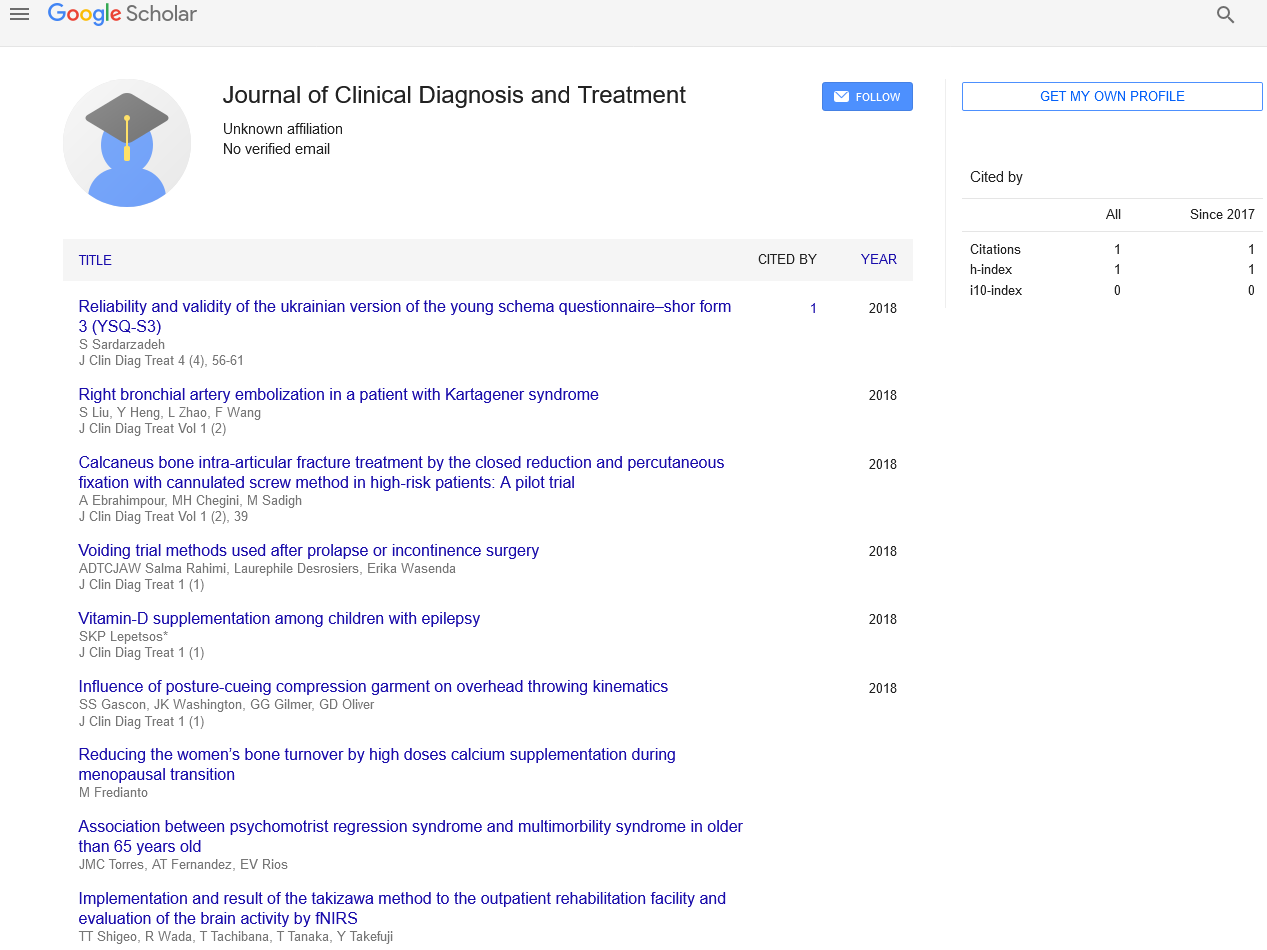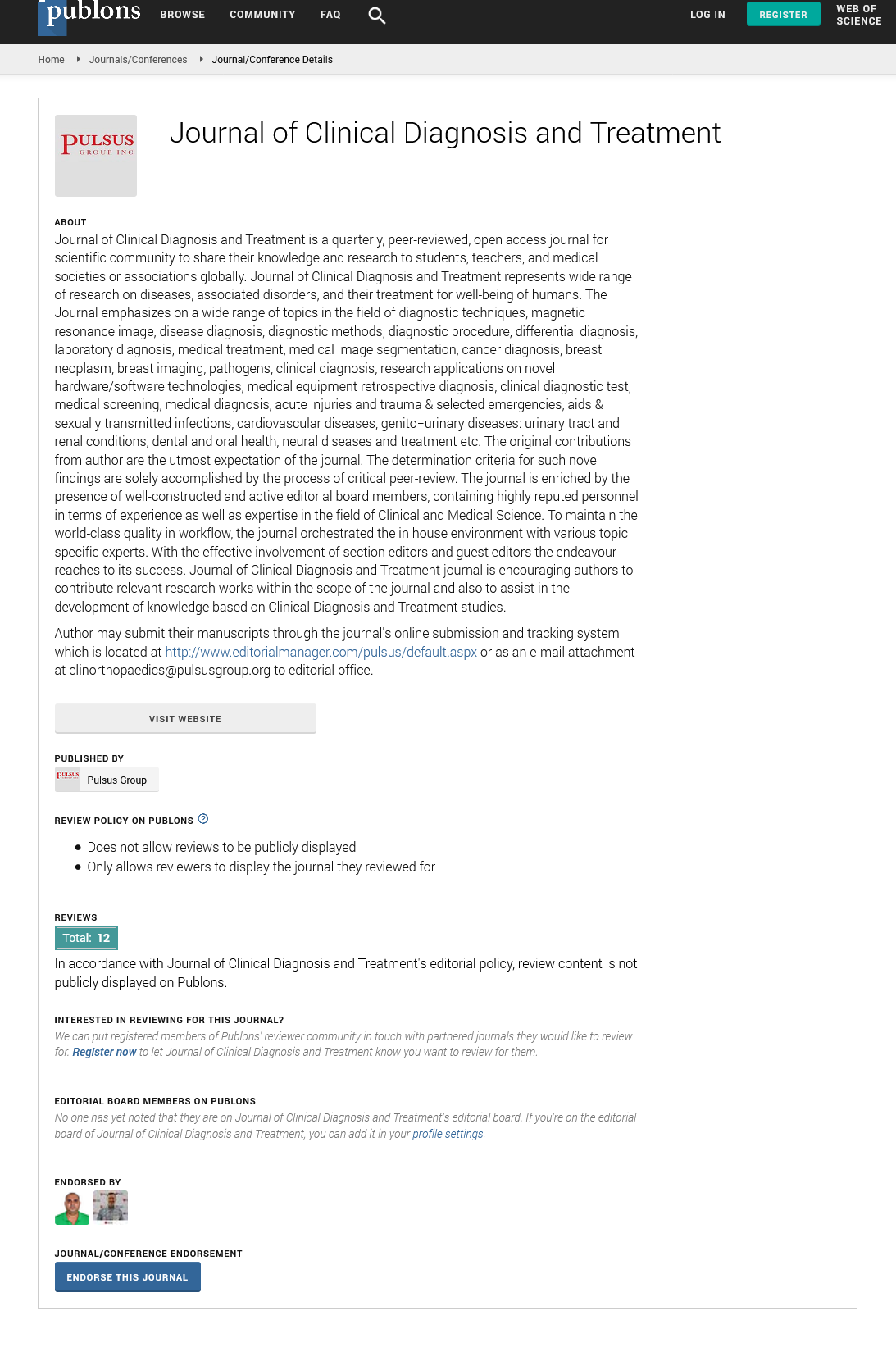Diabetes type 2: Causes and treatment
Received: 03-Jul-2022, Manuscript No. puljcdt-22-5422; Editor assigned: 05-Jul-2022, Pre QC No. puljcdt-22-5422(PQ); Accepted Date: Jul 25, 2022; Reviewed: 13-Jul-2022 QC No. puljcdt-22-5422(Q); Revised: 22-Jul-2022, Manuscript No. puljcdt-22-5422(R); Published: 30-Jul-2022, DOI: 10.37532/puljcdt.22.4(4).5-6
Citation: Smith B. Diabetes Type 2: Causes and Treatment J. clin. diagn. Treat. 2022; 4(4):5-6
This open-access article is distributed under the terms of the Creative Commons Attribution Non-Commercial License (CC BY-NC) (http://creativecommons.org/licenses/by-nc/4.0/), which permits reuse, distribution and reproduction of the article, provided that the original work is properly cited and the reuse is restricted to noncommercial purposes. For commercial reuse, contact reprints@pulsus.com
Abstract
A disorder in the body's ability to control and utilize sugar (glucose) as fuel is type 2 diabetes. This chronic (long-term) disorder causes the bloodstream to circulate with an excessive amount of sugar. Over time, cardiovascular, neurological, and immune system issues might result from excessive blood sugar levels.There are basically two interconnected issues at play in type 2 diabetes. The hormone that controls the flow of sugar into your cells, insulin, is not produced by your pancreas in sufficient amounts, which causes your cells to react poorly to insulin and absorb less sugar
Key Words
Eurological, Cardiovascular, Glycogen, Prediabetes.
Introduction
A disorder in the body's ability to control and utilize sugar (glucose) as fuel is type 2 diabetes. This chronic (long-term) disorder causes the bloodstream to circulate with an excessive amount of sugar. Over time, cardiovascular, neurological, and immune system issues might result from excessive blood sugar levels.
There are two interconnected issues at play in type 2 diabetes. The hormone that controls the flow of sugar into your cells, insulin, is not produced by your pancreas in sufficient amounts, which causes your cells to react poorly to insulin and absorb less sugar. Although type 1 and type 2 diabetes can start in childhood and adulthood, respectively, type 2 diabetes used to be classified as adult-onset diabetes. Although type 2 is more prevalent in elderly adults, type 2 instances have increased in younger people as a result of the rise in childhood obesity.
Causes
Type 2 diabetes is brought on by your body's cells not letting insulin function as it should to let glucose into its cells. The cells in your body are no longer susceptible to insulin. To produce enough insulin to overcome this resistance, your pancreas cannot keep up. The amount of glucose in your blood increases. Cells in muscle, fat, and the liver develop insulin resistance, which is the main cause of type 2 diabetes. These cells don't absorb enough sugar because insulin doesn't interact with them normally. A sufficient amount of insulin cannot be produced by the pancreas to control blood sugar levels.
The part glucose plays
1. A major source of energy for the cells that make up muscles and other tissues is glucose, a sugar. The following are some examples of how glucose is used and regulated:
2. Food and your liver are the two main sources of glucose.
3. Insulin helps glucose enter cells once it is taken into circulation.
4. Glucose is created and stored by your liver.
5. The liver converts stored glycogen into glucose when your blood sugar levels are low, such as when you haven't eaten in a while, in order to keep them within a normal range.
6. This method is ineffective in type 2 diabetes. Sugar accumulates in your bloodstream rather than entering your cells. The insulin-producing beta cells become more active as blood sugar levels rise.
This method is ineffective in type 2 diabetes. Sugar accumulates in your bloodstream rather than entering your cells. The insulinproducing beta cells in the pancreas produce more insulin when blood sugar levels rise. Over time, these cells deteriorate and are unable to produce enough insulin to satisfy the body's needs.
Risk Elements
Type 2 diabetes risk factors include the following:
1. Weight. Obesity or being overweight is a major risk.
2. Dispersion of fat. A higher risk is indicated if you store fat primarily in your abdomen rather than your hips and thighs. If you are a male with a waist measurement above 40 inches (101.6 cm) or a woman with measurement over 35 inches, you have an increased risk of developing type 2 diabetes (88.9 cm).
3. Inactivity. Your risk increases the less active you are. Exercise aids in weight management, burns glucose as fuel, and increases insulin sensitivity in your cells.
4. Family background. If your parent or sibling has type 2 diabetes, your risk of developing it also rises.
Exactly how is diabetes treated?
1. Your entire body is affected by diabetes. You must take actions to keep your risk factors under control and within the normal range in order to manage diabetes as effectively as possible, such as:
2. By adhering to a nutrition regimen, taking prescribed medicine, and upping your activity level, you can keep your blood glucose levels as close to normal as feasible.
3. Maintain your triglyceride and blood cholesterol (HDL and LDL levels) as close to the normal ranges as you can.
4. Maintain blood pressure control. Your BP shouldn't be more than 140/90 mmHg.
Oral Medications to treat Diabetes
To obtain the best blood glucose control, a variety of oral diabetic medicines may be used in conjunction with or in addition to insulin. Some of the drugs mentioned above can be found as two drugs combined in one pill. Others are available as injectable drugs, such as the GLP-1 agonists lixisenatide (Adlyxin®) and semaglutide (Ozempic®).
Medications for diabetes and diseases that are risk factors for diabetes, insulin, and dietary and lifestyle modifications like decreasing weight, choosing nutritious foods, and increasing your physical activity level are all possible treatments for type 2 diabetes.
Prevention
1. Even if you have biological relatives who have the disease, adopting a healthy lifestyle can help prevent type diabetes.
2. Eating healthy foods is part of living a healthy lifestyle. Pick foods with more fibre and fewer calories and fat. Put an emphasis on whole grains, veggies, and fruits.
3. Shedding pounds. The transition from prediabetes to type 2 diabetes can be halted by modest weight loss and weight maintenance.
4. Avoiding prolonged inactivity. Your risk of type 2 diabetes may rise if you spend a lot of time sitting still.






